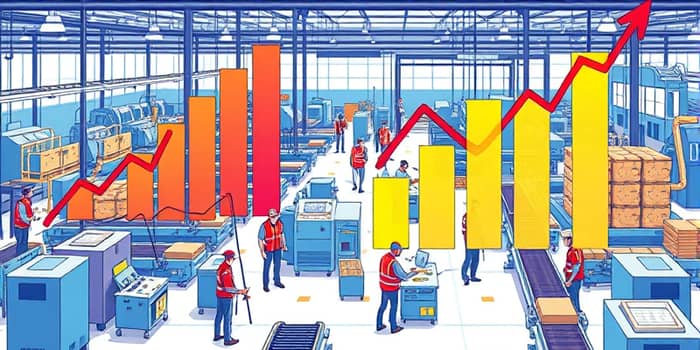
The Manufacturing Purchasing Managers Index (PMI) has become an indispensable tool for gauging the health of the global industrial sector. By transforming survey responses from purchasing managers into a single diffusion index, it offers real-time insights into business conditions and serves as a critical compass for decision-makers.
The PMI is a leading economic indicator derived from monthly surveys of purchasing managers in the manufacturing sector. A reading above 50 indicates expansion, below 50 signals contraction, and exactly 50 denotes no change compared with the prior month. Published by the Institute for Supply Management (ISM) in the U.S. and by various agencies worldwide, the PMI provides an early snapshot of industrial activity, often preceding official data releases like GDP and industrial production figures.
Because purchasing managers are on the front lines of supply chains, their assessments are considered highly influential for business leaders, policymakers, analysts, and investors, offering actionable insights before more comprehensive data emerge.
The headline Manufacturing PMI is a composite index, typically weighted equally (20% each) among five key sub-indices. Each sub-index reflects whether activity in that area is better, the same, or worse than the previous month.
Each sub-index score is calculated as the percentage reporting improvement plus half the percentage reporting no change, then seasonally adjusted (except for inventories). The weighted average of these scores yields the overall PMI reading.
A PMI reading above 50 points to expansion, with higher values indicating stronger growth momentum. Conversely, readings below 50 suggest contraction, and the distance from 50 reveals the intensity of the trend. Businesses track multi-month trends rather than isolated readings, seeking consistent directional signals to inform strategy.
While PMI methodology is largely standardized, variations exist across countries. For example, China’s manufacturing PMI includes 13 sub-indices—new/existing/export orders, inventories, employment, supplier deliveries, prices, and future expectations—offering a more granular view tailored to local industry profiles.
These global indices enable cross-country comparisons and benchmarking, providing investors and policymakers with a broad, representative sample of manufacturing health across economies.
The PMI is among the first monthly indicators released, typically on the first business day of the month, making it a bellwether for prior-month industrial performance. Financial markets—currencies, bonds, and equities—react swiftly to PMI surprises, often adjusting valuations and forecasts based on unexpected expansions or contractions.
As of October 2024, the U.S. Manufacturing PMI stood at 46.5, indicating a persistent contraction in industrial activity. A year earlier, this reading was 46.9, underscoring ongoing headwinds such as supply chain disruptions and softer demand.
Emerging markets have shown mixed performances: some Southeast Asian countries reported readings in the low 50s, while parts of Europe lingered below the 50 threshold. Analysts caution that single-month readings may reflect transitory factors—such as weather events or port slowdowns—so they emphasize trend movements over several months to discern underlying shifts.
Advantages:
Limitations:
Manufacturers leverage PMI to optimize production planning, adjust staffing levels, and manage inventory buffers. A rising PMI may prompt firms to expand capacity or accelerate hiring, while a falling index could trigger cost controls and hiring freezes. Investors use PMI data to calibrate asset allocations—favoring cyclical sectors when expansion is broadening and defensive positions when contraction looms.
Policy officials at central banks monitor PMI alongside inflation and employment data, using it to gauge the pulse of economic activity and set monetary policy accordingly. In emerging markets, PMI trends often signal shifts in export demand, prompting adjustments in currency and fiscal strategies.
The Manufacturing PMI remains a vital gauge of industrial health, offering advance signals about broader economic performance. Its timely release and standardized methodology make it a trusted reference for stakeholders worldwide. While no single indicator can capture every nuance, the PMI’s blend of quantitative rigor and practical relevance ensures it will continue to guide business strategy, policy decisions, and investment flows in the evolving global economy.
References













